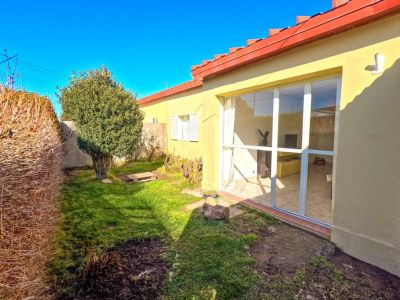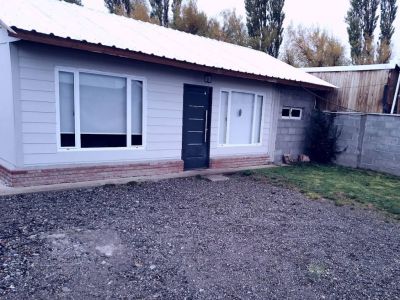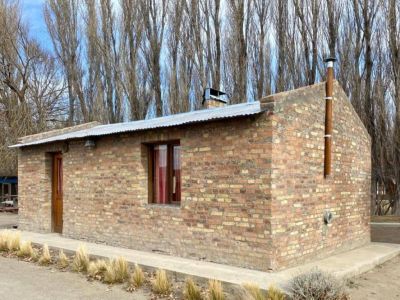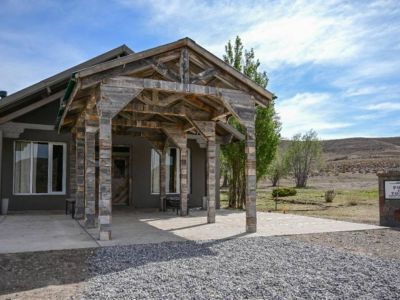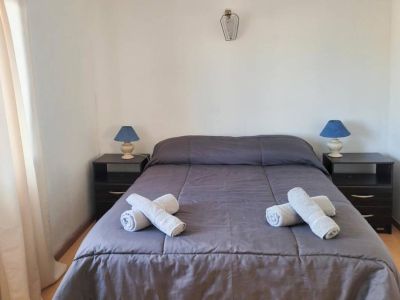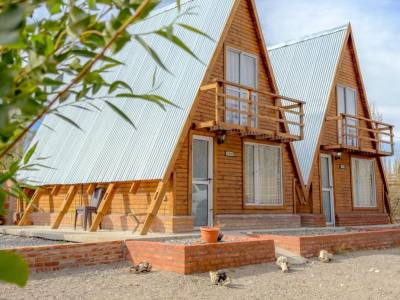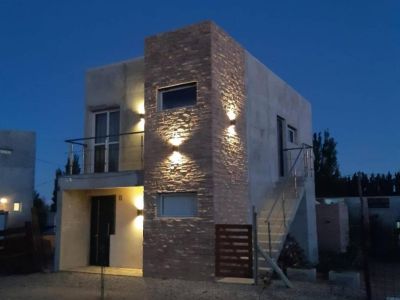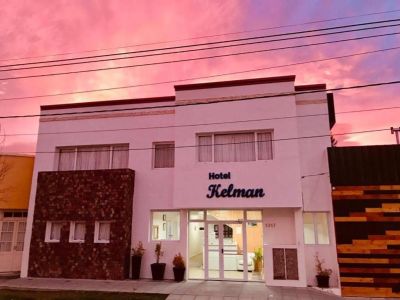The archeological site at the Pinturas River is a landmark of Perito Moreno and its drawings and crafts bear witness to the first hunter-gatherers living in southern Argentina. We went on the outing to visit this amazing place and get a taste of adventure travel as well. After driving along the Patagonian steppe, past guanacos and rheas, we reached the Pinturas River canyon and its research area. With growing enthusiasm we left the Interpretation Center with our guide and began our tour of paths, ledges and caves. Our walk began at a 1500-meter-long path on one side of the canyon, close to enormous volcanic and porphyritic rocks, leading to the famous Cueva de las Manos (Cave of the Hands). Every now and then we stopped to look over the railing at the Pinturas River, flowing 170 meters below. The walk was intense: at the beginning the path slopes down towards the river but then continues up steep stone slopes. On reaching the main cave, we could hardly believe our eyes and ears as our guide told us “hundreds of hands and other negative and positive patterns in red, ocher, yellow, green, black and white have been recorded. Human figures and guanaco hunting scenes have been studied by archaeologists since 1972. Carbon 14 dating has been used to determine the age of the different imprints”.
Prehistoric Cueva de las Manos
We conscientiously studied the figures for some time while being briefed on the work of archaeologists. They analyzed the natural layers, the techniques and materials, the uniqueness, varietyabundance of the figures to understand the cosmovision of these native people who settled in the area over 9300 years ago. They have managed to determine the population in each pre-tehuelche stage, their role, their rituals and symbols. The paintings belong to two distinct cultures: casapedrense and toldense. The former, dating 7500 years ago, were hunters who made good use of animal skin, meat and bones. Remains of animals such as guanacos, skunks, cervids and rodents were found as well as birds. Arrow heads, scrapers and rasps are some of the lithic pieces found. Chronologically older, the toldense had managed to use certain elements in their daily life. Perhaps the most outstanding are the boleadoras a throwing weapon made of rounded stones at the end of interconnected crude leather straps. The more we saw and heard, the better we understood what an unbelievable part of prehistoric times we were experiencing and were really thankful to have made the trip. The simple drawings were astonishing and the explanations given by our guides were both entertaining and interesting.
The Adventure Begins
There are several great trekking options for the physically fit. Two nearby estancias offer accommodation and the service of specialized guides to trek in the steep slopes of the river canyon. the ledge at Charcamata and Cueva Grande will be reached on a full-day tour. Another option is being driven a few kilometers in a 4WD and then trekking in the more rugged area. Both estancia Cueva de las Manos (formerly Los Toldos) and Casa de Piedra provide this service. These cave paintings, a blend of nature and culture reaching out to us from prehistoric times, have been declared a National Historic Monument and World Heritage Site (UNESCO). As we left, a feeling of respect overcame us. We realized the importance of preserving these unique, irreplaceable sites. Mónica Pons
Contact of the excursion or tour
Municipalidad
San Martín 1776, Perito Moreno, Santa Cruz, Argentina
Phone: +54 2963-432020
Estancia Cueva de las Manos
60 kilómetros al sur de Perito Moreno por ruta 40, Perito Moreno, Santa Cruz, Argentina
Phone: +54 2975-353982
Cell Phone: +54 2975-353982
Camping Estancia Casa de Piedra
80 kilómetros al sur, sobre ruta nacional 40, Perito Moreno, Santa Cruz, Argentina
Phone: +54 2963-432199
Challenging on the ledges
Certified guide required
Admission fee
We strongly recommend wearing comfortable clothes and shoes and taking mineral water. It is cold in winter and hot in summer.















